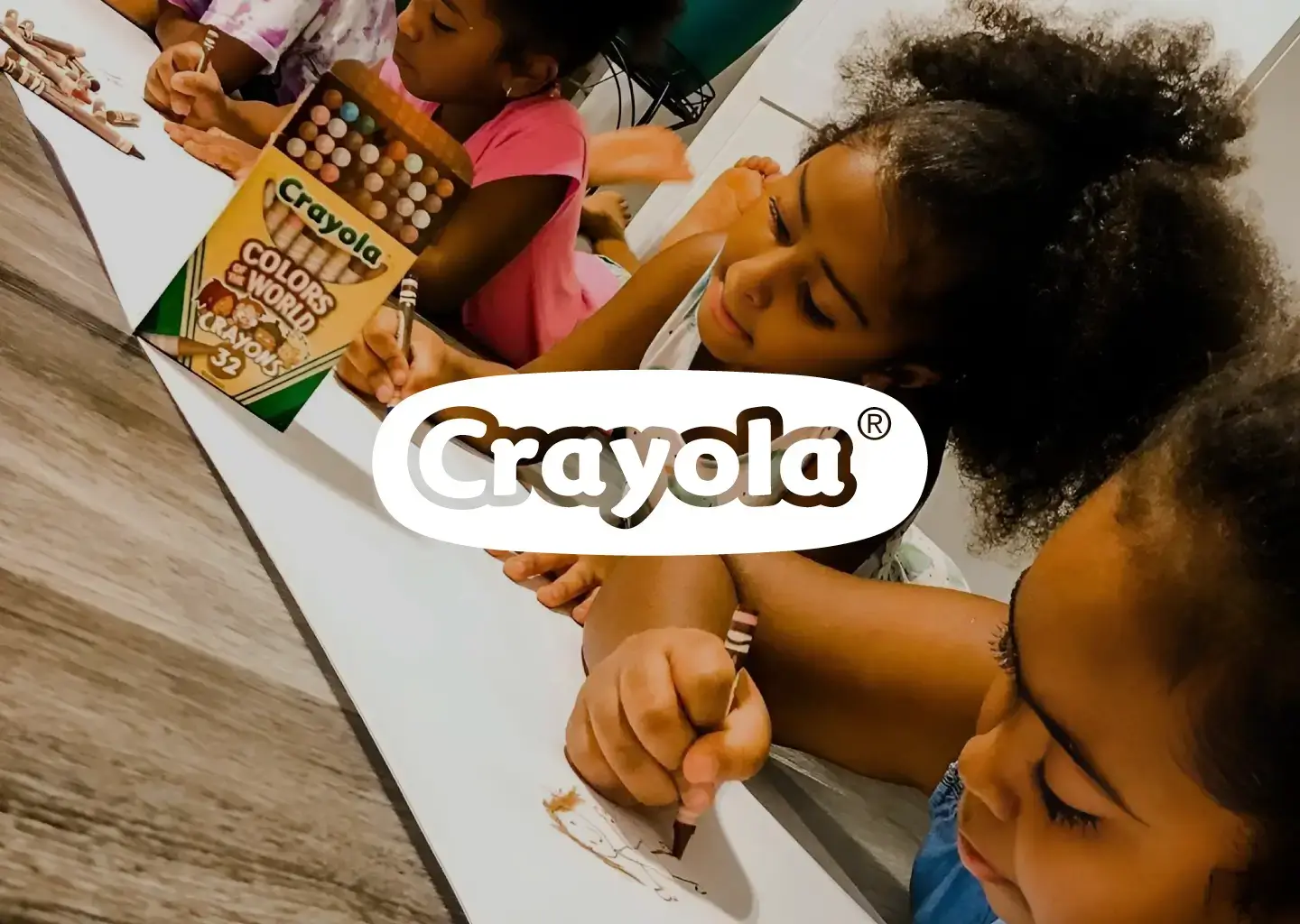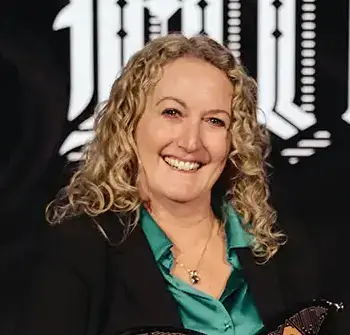Crayola + Qualtrics
Adding color to
critical decisions
Crayola achieved
Won the Toy Association Creative Toy of the Year
58,000 crayons sold in
a pre-sale partnership
with Walmart
Won “PRWeek: Best
Consumer Launch”
Overview
Crayola manufactures billions of crayons every year, not to mention markers, paints, colored pencils, and an array of other products meant to inspire kids’ creativity. To ensure Crayola promotes the importance of inclusion and self-expression, they set out to revamp a product that was beloved by teachers, but relatively unknown to the general public – ultimately creating Crayola Colors of the World.

ADDING COLOR TO CRITICAL DECISIONS
Crayola believes that by the time a child picks up their first crayon, they’re already forming ideas about whether or not they belong. That’s why they created “Multicultural Crayons” over 30 years ago containing eight colors. “Multicultural Crayons” aimed to give every child the color palette to represent their skin tone.
And while there was a lot that was good about this product, they realized there was room for improvement. Consumers liked the product but they felt it didn’t go far enough to provide for the range of skin tones out there. Crayola began looking at how they could expand the color palette and revisit the product name and what the colors would be called.
Crayola has long relied on extensive market research to inform decisions related to new products and marketing. In addition to large, quantitative studies, the company conducts focus groups at its Pennsylvania headquarters, fields In-Home Usage Tests, collects and analyzes social media feedback and online reviews, and more.
The Consumer Insights Team at Crayola is a small team operating on a watertight budget. It was critical that they could partner with a platform like Qualtrics to aid as they designed and improved a new, more modern version of this product with limited in-house headcount and finite resources.
Developing the right tone
Crayola worked with industry experts to ensure that they were authentic, credible and transparent – both in product development and their own internal processes inside the company.
However, getting to the right skin tone colors was only part of the story – they wanted to be inclusive in everything about the product, from color names to packaging to how they talked about it in the world.
Research was critical to helping the team to strike exactly the right tone.
Crayola worked with beauty industry expert Victor Casale, former R&D director at MAC Cosmetics and current CEO of MOB Beauty, to develop 24 colors representing >90% skin tones across the globe. Further, the colors can be blended to represent an additional 5-10%.
Listening and acting on feedback
Crayola then conducted numerous rounds of research using Qualtrics, talking to over 9,000 consumers (parents and teachers). They also recorded video clips of kids, parents, and teachers telling them how the product made them feel.
Overall, feedback was positive, as they found the idea very appealing and it had strong purchase interest. Parents rated the idea strong on a variety of product attributes, including being new and/or different, Crayola valuing diversity, representing diversity, allowing kids to draw more accurately, kid enjoyment, and making kids feel proud and confident. Teacher scores were even higher.
Most of the verbatims were extremely positive – using words like ‘inclusive’, ‘representative’, ‘feeling welcome’, and ‘feeling included’.
Consumers talked about how much this product was needed and how it would allow kids to more accurately draw the people around them in an authentic way.
There were a few negative comments about not wanting to call attention to skin color and racial differences. This prompted the team to take extra steps to ensure they did not cause any distress as they introduced this product line.
Colors of the world
One important thing Crayola wanted to test was the product line name. “Colors of the World” was the clear winner for parents. They said they loved it for all the right reasons – including that it promoted inclusivity and unity without being perceived as political. Consumers also loved that it didn’t specifically say anything about race or skin color. The name was also seen as catchy and kid-friendly, which made it a better fit for the Crayola brand. For teachers, “Multicultural” was tied for #1, likely due to teachers being more familiar with the current 8ct product at the time. For both groups, names that were more “personal” and called attention to differences were less liked.
The team also worked with Qualtrics on extensive packaging research, including the package front design – some of which looked very different from a typical Crayola package. This was their most comprehensive study where they surveyed around 6,000 consumers. In addition to all the feedback they received on the package front, the team also did a lot of work on the back and sides of the pack. Consumers loved the back of the pack containing a “reason to believe” story and showing the colors via crayon tips. And they liked seeing the colors with color names on the sides of the pack.
Lastly, they tested different color naming conventions and different styles for the crayon labels. This resulted in 24 distinct names that directly correlated to the skin tones.
The critical importance of inclusivity
All of this research helped the team at Crayola launch with confidence, and the reception in the market was extremely positive.
Colors of the World was launched in the Summer of 2020, amidst a global pandemic and a chaotic political climate. It was important for Crayola to share a message of inclusivity and self expression without looking opportunistic or tone-deaf to events happening in the United States.
Ultimately, they were able to highlight what the Crayola brand has always been about – inclusivity and the originality of every child.
Crayola then partnered with Walmart to launch the product and they received thousands of pre-orders and they featured Colors of the World in their Back To School TV ad.
They also received a wealth of UGC (User-Generated Content) from consumers who were thrilled to see this product in the market – a lot of the verbatims they got in their research were echoed in the UGC posts.

Andrea Hutson
Senior Manager, Consumer Insights, Crayola
All of this research helped us launch with confidence, and the reception in the market was extremely positive.
Crayola has inspired artistic creativity in children for more than 100 years – since the first box of Crayola crayons rolled off the assembly line in 1903. The company began when cousins Edwin Binney and C. Harold Smith took over Edwin's father's pigment business in 1885. Early products included red oxide pigment used as barn paint and carbon black used in car tires.
After noticing a need for safe, high quality, affordable wax crayons, in 1903, Crayola produced the first box of eight crayons and sold them for 5 cents.
Crayola is passionate about helping parents and educators raise creatively-alive children. The company has created a broad portfolio of products, experiences and content that encourage kids to explore, discover, play, pretend, and dream. Through its work, Crayola sees a world where the inherent creativity of children is fully nurtured into adulthood, filling the world with more curiosity, imagination, and kindness.
Crayola has called Lehigh Valley, Pennsylvania, its home since the turn of the century. Today, the company's world headquarters and major manufacturing facilities are located there. Downtown Easton is the home of The Crayola EXPERIENCE®, our interactive brand experience where families can enjoy a day of creative fun and see how we make our iconic Crayola crayons and markers.
crayola.comIndustry
Consumer goods
Region
Global
Company Size
Enterprise
Business Type
B2C